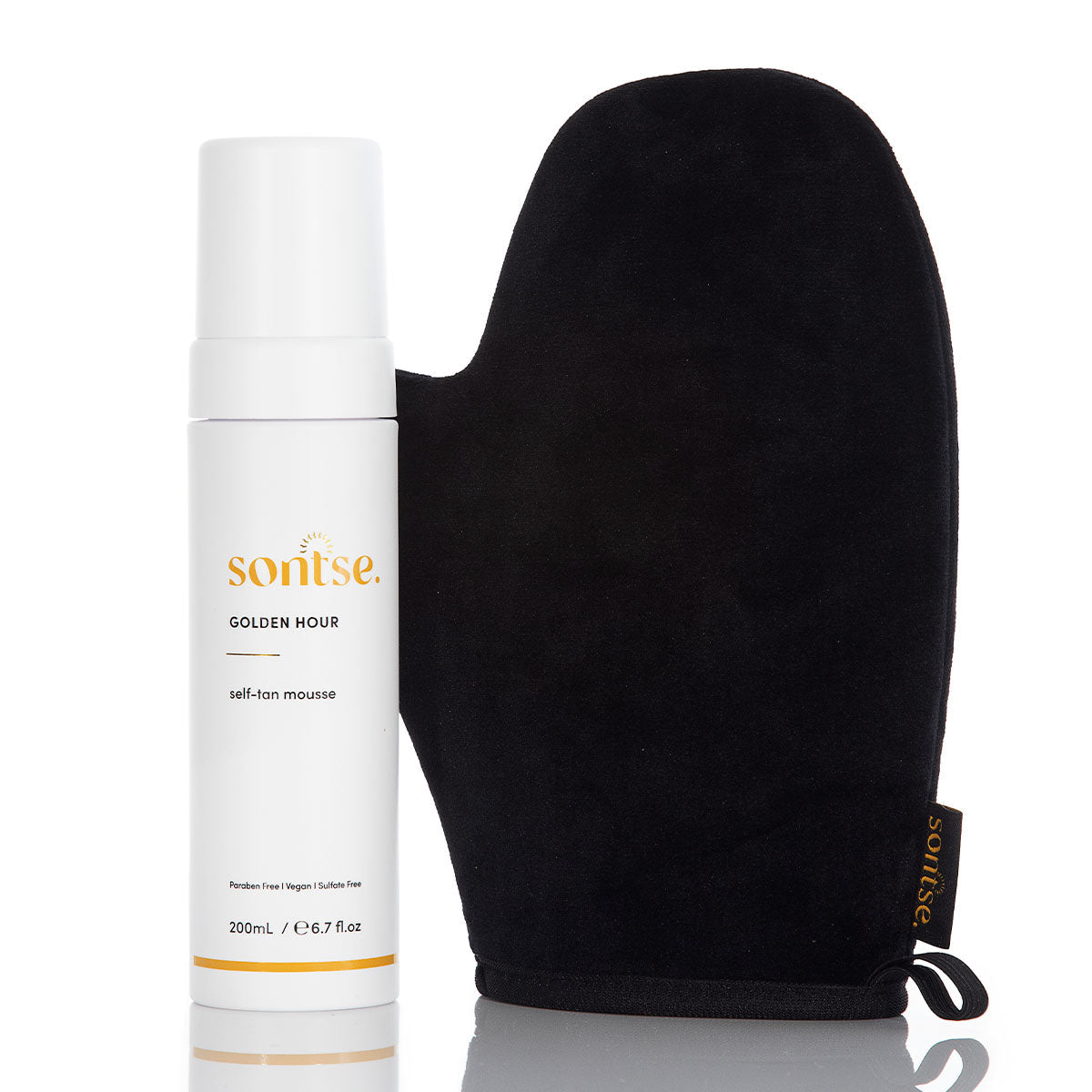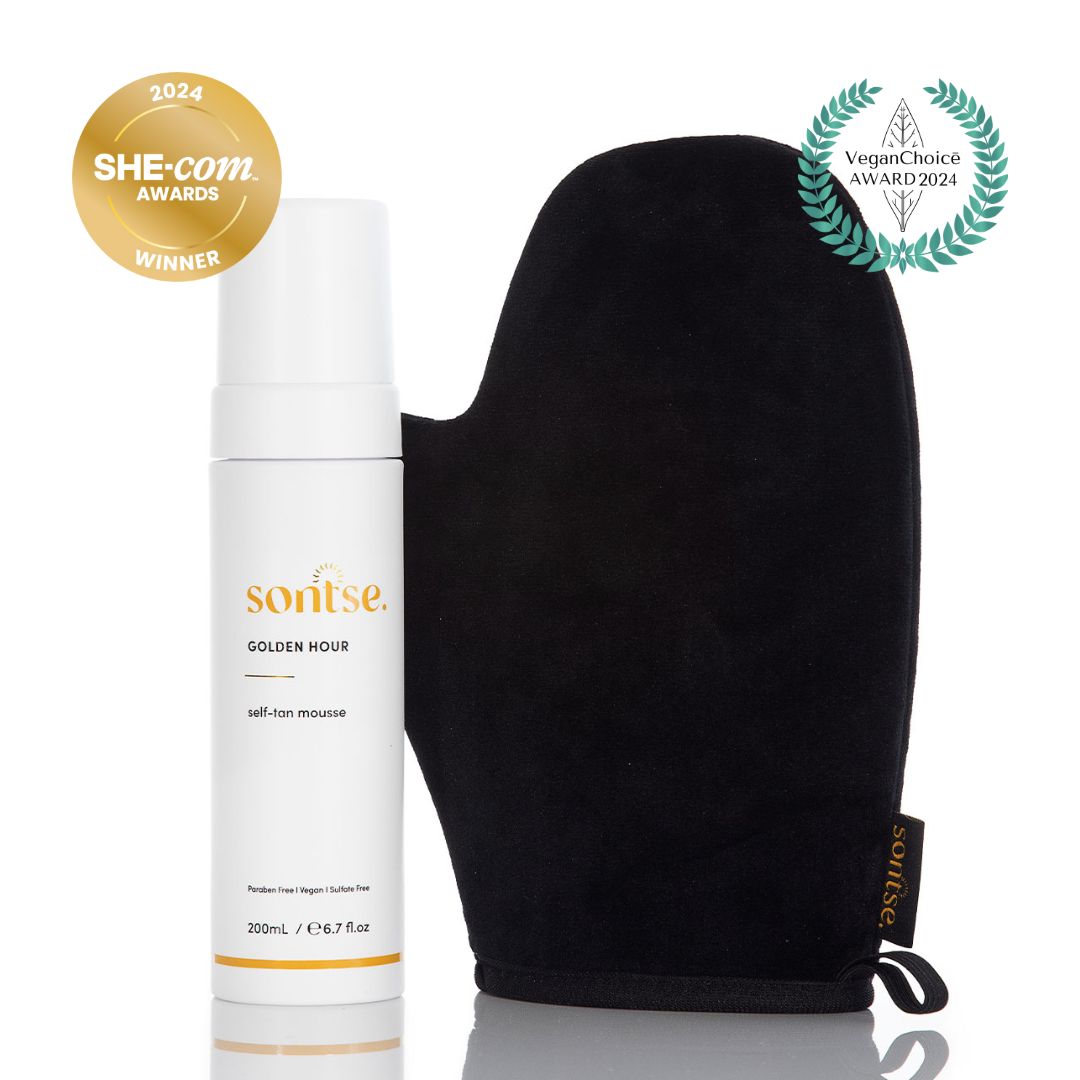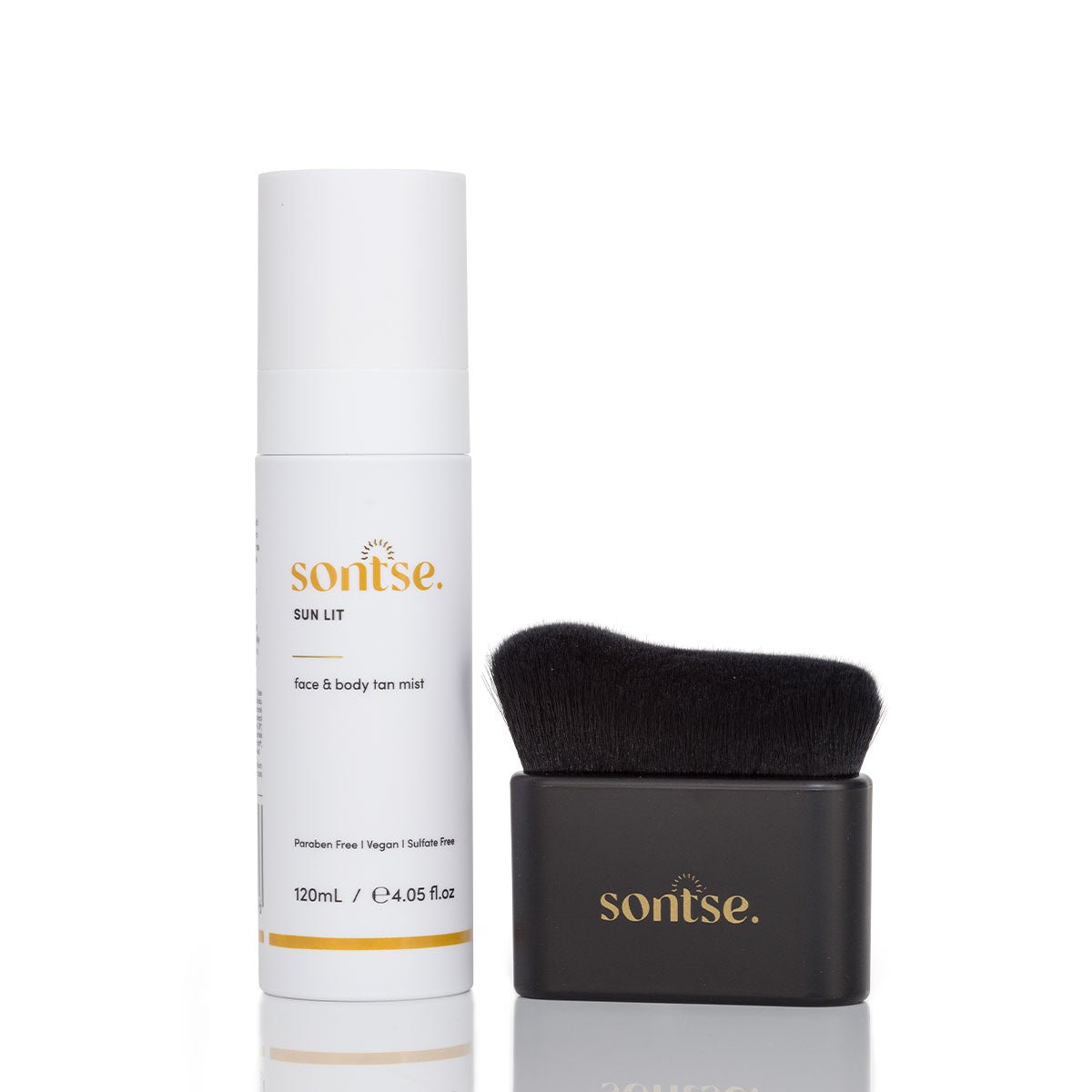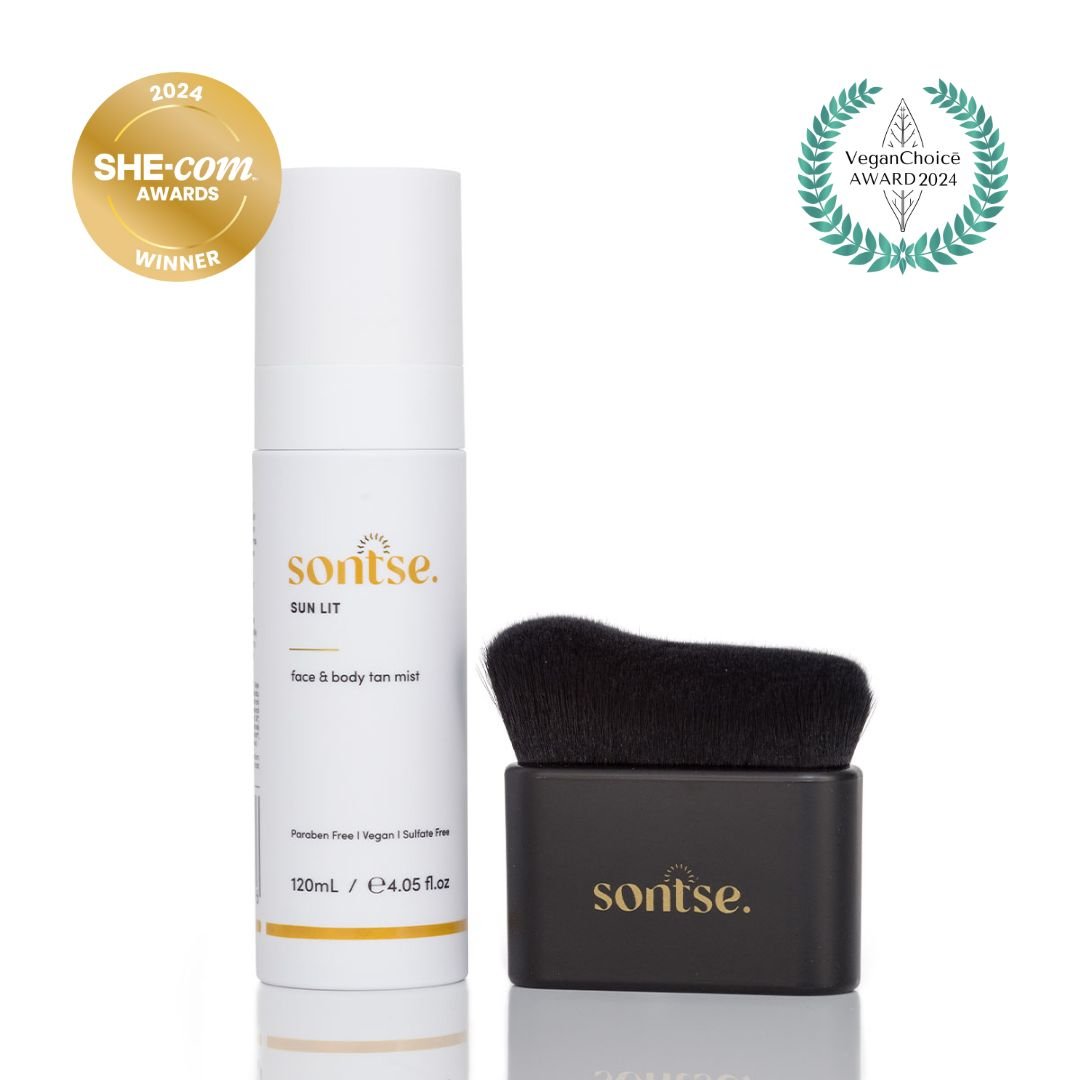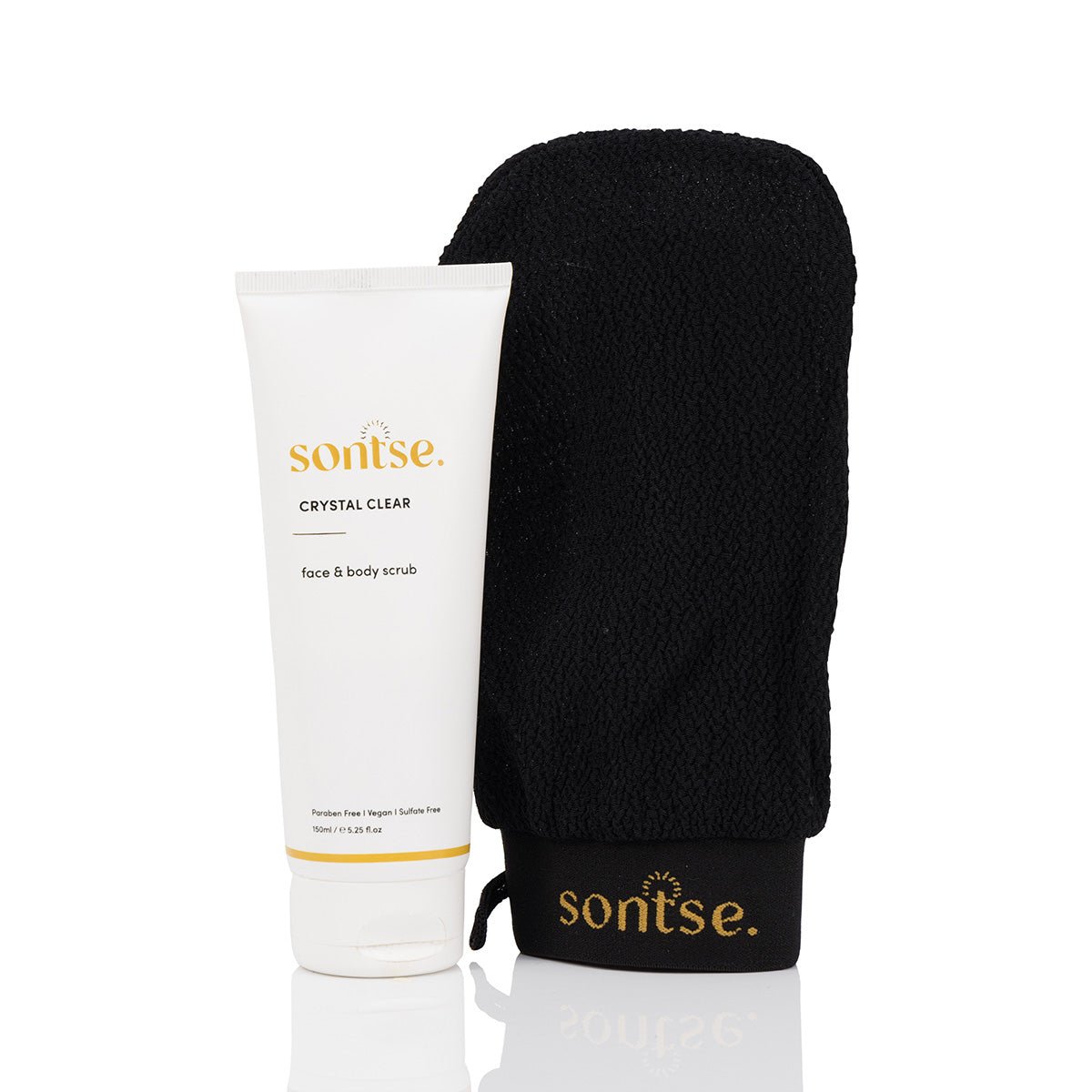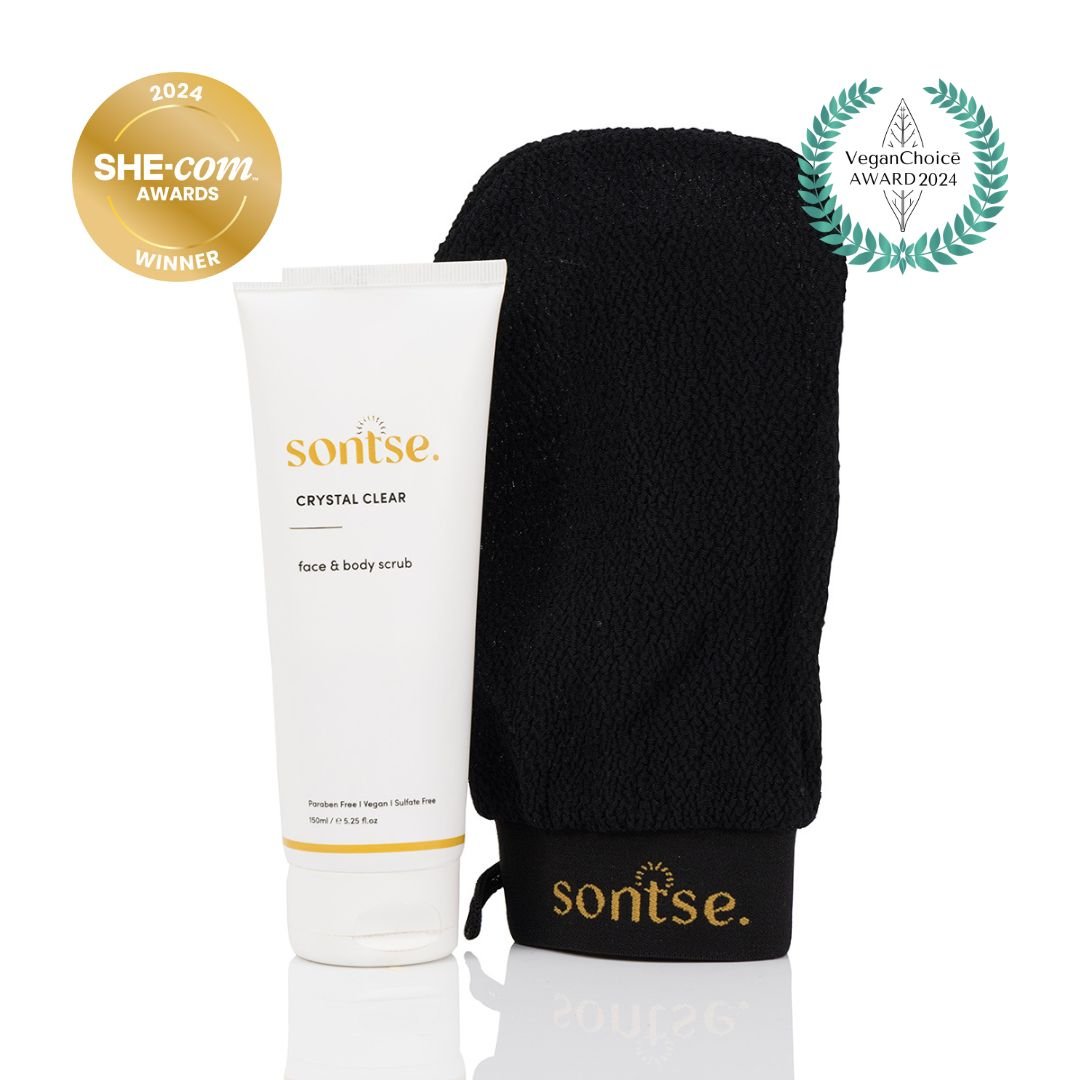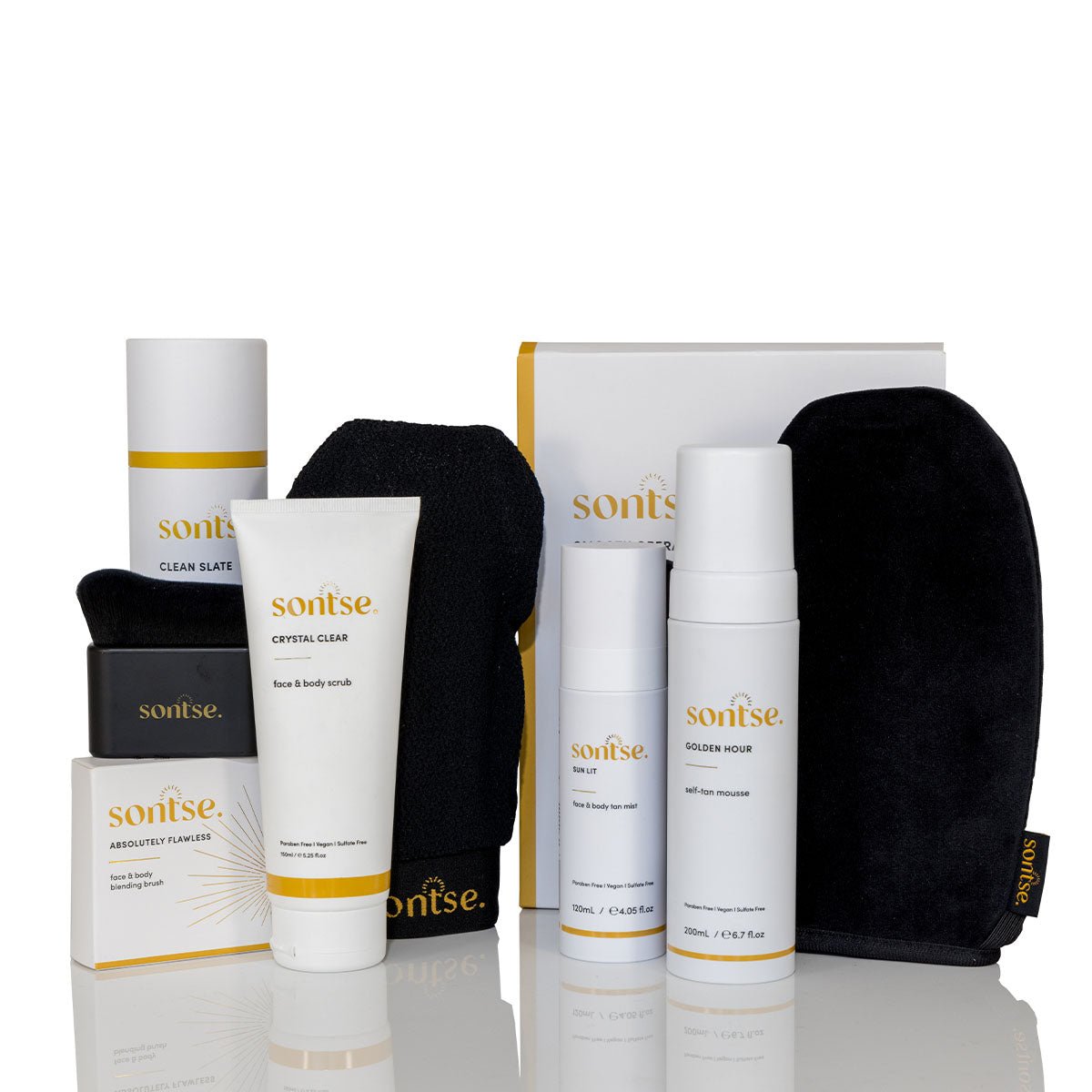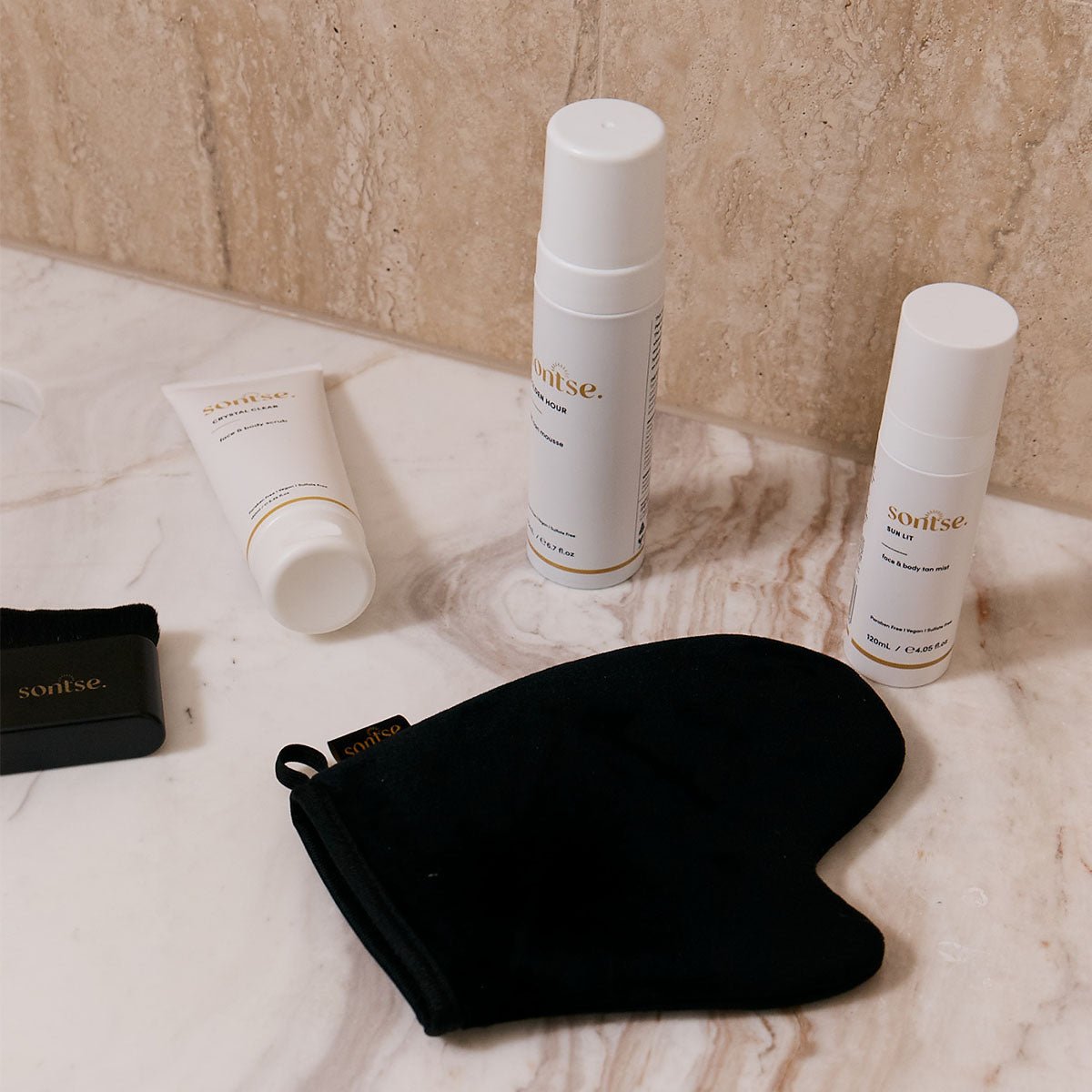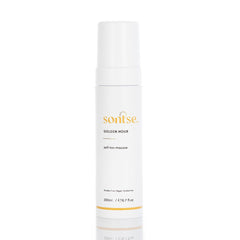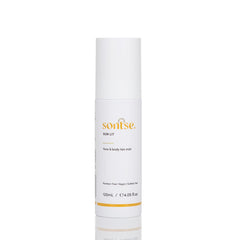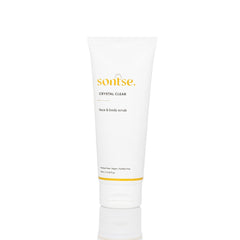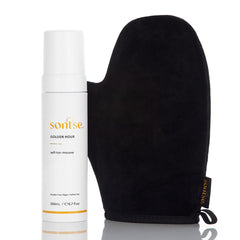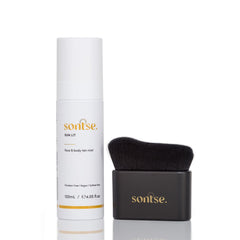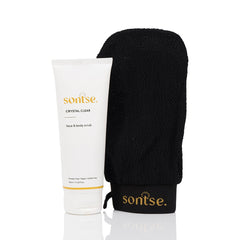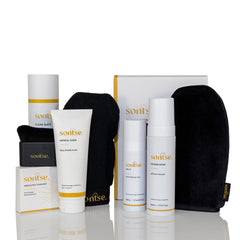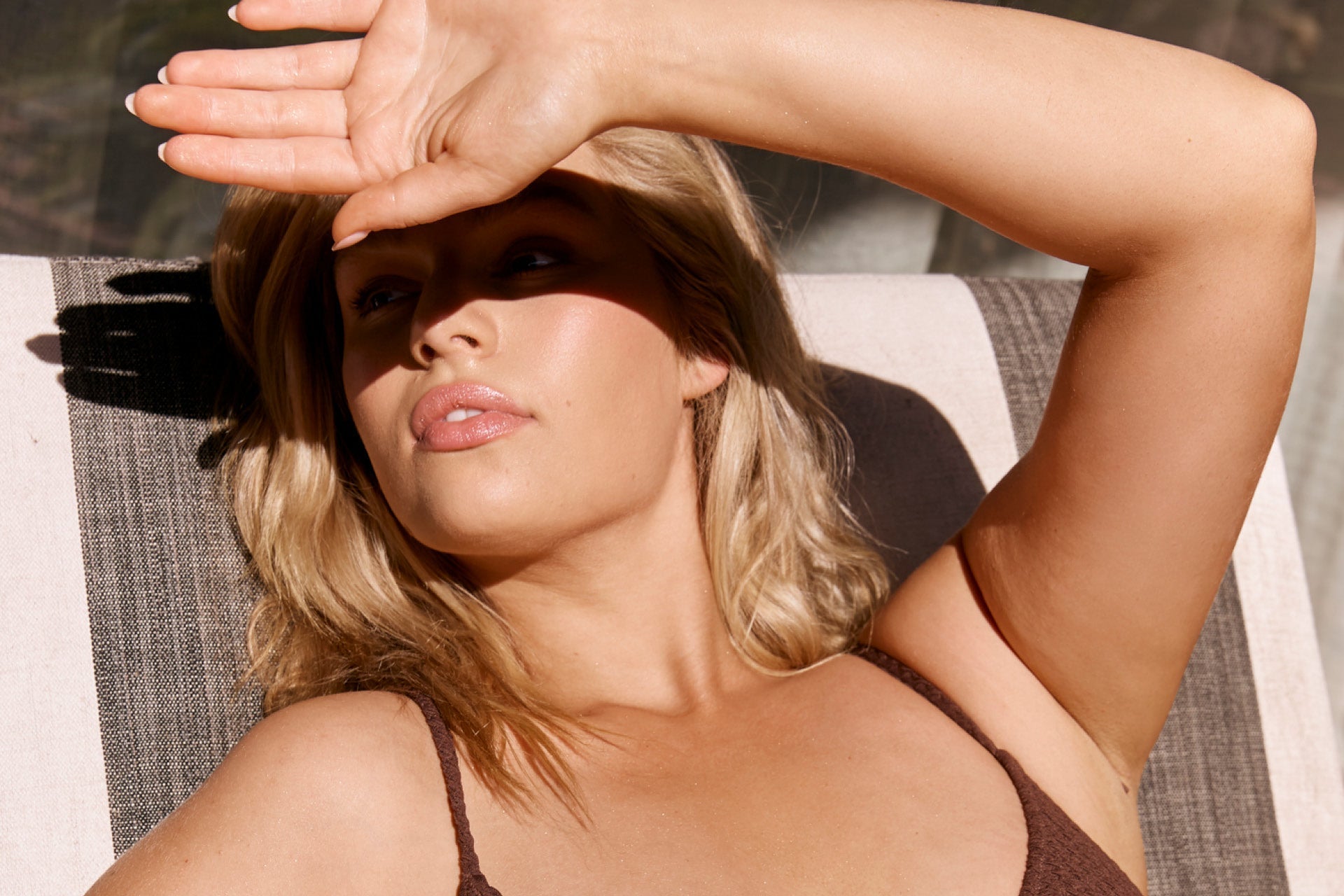Everything you need to know about SPF tanning and the smarter way to glow.
Sunscreen—it's a summer essential we're told to apply religiously, but does it really stop your skin from tanning? Will SPF keep you in the shade of pale, or can you safely soak up the sun without sacrificing your skin health? If you've ever wondered, "Does sunscreen block tanning entirely?" the answer might surprise you. Let's clear up the confusion and talk about how sunscreen works, its role in sun safety, and why sunless tanning might just be your skin's new best friend.
The question on everyone's lips: can you tan with sunscreen on?
Surprisingly, you can tan whilst wearing sunscreen. Although sunscreen is designed to protect your skin from harmful UV rays— it does not block all the sun's effects (University of Rochester Medical Center, n.d.). While SPF reduces your skin's exposure to ultraviolet radiation (the culprit behind burns, aging, and skin cancer), small amounts of UV light still reach your skin, which can stimulate melanin production and cause a tan over time.
So wouldn't this be a safer way to tan?
Well, actually, no – the kind of glow that comes from UV exposure isn't a badge of health—it's your skin's SOS signal that damage is happening.
As Johns Hopkins Medicine (n.d.) explains regarding sun-induced tans:
'This is the first defence against the sun. That's because melanin absorbs the dangerous UV rays that can do serious skin damage. A sunburn develops when the amount of UV damage exceeds the protection that the skin's melanin can provide.'
UV light and the difference between UVA and UVB explained.
To really understand what's happening when your skin is tanning, let's take a step back and look at the science. In an article published by Mass General Brigham (2023), Dr. Demehri shares the differences between the two ultraviolet rays that reach our skin and the impact they can have on us based on their wavelengths.
He shares,
'UVA is a longer wavelength that penetrates deeper into the skin, reaching layers beneath the surface. UVA rays are associated with skin aging and inflammation and can lead to skin cancer.
On the other hand,
'Shorter UVB waves cause skin to burn. UVB is a major driver of skin cell mutations that cause skin cancer.'
You can see why protecting your skin from the sun and minimising exposure to both UVA and UVB is essential.
What about the SPF? How does SPF work?
SPF, or Sun Protection Factor, measures how well sunscreen protects your skin from UV radiation. It specifically shows how much more UV exposure your skin can handle before burning when sunscreen is applied compared to going without it (FDA Organization, 2017). So, when asking, 'Does sunscreen prevent tanning completely?', it becomes clear why it doesn't—sunscreen reduces UV exposure but doesn't block it entirely.
Does a higher SPF prevent tanning? Can you tan with sunscreen SPF 50?
The higher the SPF, the more UV protection it offers, but no sunscreen provides 100% coverage. For example, SPF 50 filters out about 98% of UVB rays, leaving just enough exposure for a subtle tan to develop (Environmental Working Group, n.d.).
If you're aiming for a golden glow, though, there's no need to rely on the sun at all. A sunless tanner like Golden Hour Self-Tan Mousse gives you that radiant look—minus the risks.
Developing in as little as one hour, you no longer need to ask questions like 'How long does it take to tan with SPF 50?' If looking after your skin health really is a priority (which we are guessing it is if using SPF 50 is already important to you), then skip countless hours under the sun altogether and opt for a sunless tanner that delivers instant results, no waiting or risks required. Then, once you're done, layer a protective coat of SPF50 sunscreen over your perfectly bronzed tan with no temptations to linger in the sun a little longer at the detriment of your health.
Why sunscreen is essential for sun safety
So this is where elevating your beauty routine with the daily application of sunscreen is so vitally important for skin health. Think of sunscreen as your skin's invisible armour. It shields against UVA rays, which penetrate deep into your skin and accelerate aging, and UVB rays, responsible for those dreaded sunburns (Mass General Brigham, 2023).
But not all sunscreen is created equal.
How sunscreen works: chemical vs. mineral filters
According to an article by Skin Cancer Foundation, Richard (2022) explains how sunscreen works by creating a barrier between your skin and the sun's UV rays. The article then goes on to explain the two typical types of sunscreens in the market today and how they work:
Chemical sunscreens:
Absorb UV rays, turning them into heat and releasing them from the skin.
Mineral sunscreens:
Use natural compounds like zinc oxide and titanium dioxide to deflect or bounce UV rays away from the skin.
Although both types have been tested and deemed safe (Richard, 2022), at Sontse, we personally love mineral sunscreens as they may be a gentler option with less chance of irritation for those with sensitive skin.
No matter what you choose, though, be sure to opt for a sunscreen that has "broad-spectrum" coverage, which protects against both UVA and UVB rays (Melanoma New Zealand, 2022), and opt for an SPF rating of 50.
Best SPF for tanning: why "tanning sunscreen" is a myth
Many products are marketed as the "best tanning sunscreen," but there's no sunscreen that promotes safe tanning. Sunscreen's primary role is to protect—not enhance—your tan. To achieve your ideal glow without UV exposure, a sunless tanner like Golden Hour is your best option.
Then, as mentioned above, choose a broad-spectrum sunscreen with SPF 50 for the most chance of protection and follow these 6 essential tips for practising sun safety.
The risks of tanning with sunscreen (and why sunless is safer)
Still tempted to sunbake? Tanning under the sun, even with SPF, can still lead to skin damage. According to OnSpot Dermatology (2024), prolonged exposure increases the risk of:
- Skin cancer: UV exposure is the leading cause of melanoma and non-melanoma skin cancers.
- Premature aging: Wrinkles, fine lines, and pigmentation caused by UVA rays.
- Sunburn: No sunscreen is foolproof, and burns can still occur.
If you're set on achieving a bronzed look, sunless tanning products are your best bet. Unlike natural tanning, sunless tans don't expose your skin to harmful UV rays. Instead, they use DHA (a safe, naturally derived ingredient) to tone the outer layer of your skin, creating a golden glow that looks natural and fades gradually.
Our final thoughts on does sunscreen block tanning? Try a safer way to glow
While sunscreen is a skincare essential for protecting your skin, it doesn't completely prevent tanning—or eliminate the risks of UV damage. Natural tanning, even with SPF, can be dangerous. Choosing a sunless tanner offers all the benefits of a radiant, sun-kissed glow without any of the downsides.
That's why at Sontse, we have curated a solution that bridges the gap between achieving your beauty goals and maintaining optimal skin health. By formulating a skin-safe, non-toxic sunless tanner, we've bottled up our UV-free form of sunshine so you can glow sunlessly.
Plus, by simply following our guide on how to tan quickly and safely, you can eliminate hours wasted damaging your skin in the sun.
Protect your skin, prioritise your health, and glow confidently with a safer, smarter alternative to sun tanning. Your future self will thank you.
Written By Liana Pantalone – Beauty & Skincare Copywriter at Climbing Vine Co.
References
Environmental Working Group. (n.d.). The trouble with SPF | EWG's Guide to Sunscreens. Environmental Working Group. Retrieved December 12, 2024, from https://www.ewg.org/sunscreen/report/whats-wrong-with-high-spf/
FDA Organization. (2017, 07 14). Center for Drug Evaluation and Research (CDER). Sun Protection Factor (SPF). https://www.fda.gov/about-fda/center-drug-evaluation-and-research-cder/sun-protection-factor-spf
Johns Hopkins Medicine. (n.d.). Sun Safety. Sun safety for the entire family. Retrieved December 12, 2024, from https://www.hopkinsmedicine.org/health/wellness-and-prevention/sun-safety
Mass General Brigham. (2023, 09 23). Understanding UVA and UVB. Preventing Skin Damage From UVA and UVB Rays. https://www.massgeneralbrigham.org/en/about/newsroom/articles/uva-and-uvb-ray-differences
Melanoma New Zealand. (2022). All About Melanoma. Prevention. https://melanoma.org.nz/all-about-melanoma/prevention/
OnSpot Dermatology. (2024). Skin Health. Prepare For Summer With OnSpot. https://onspotdermatology.com/skin-education/prepare-for-summer/
Richard, E. G. (2022, 07). All About Sunscreen. The Skin Cancer Foundation. Retrieved December 12, 2024, from https://www.skincancer.org/skin-cancer-prevention/sun-protection/sunscreen/
University of Rochester Medical Center. (n.d.). Health Encyclopedia. Sunscreens: Protect Your Skin. Retrieved 12 12, 2024, from https://www.urmc.rochester.edu/encyclopedia/content?contenttypeid=85&contentid=P01351

